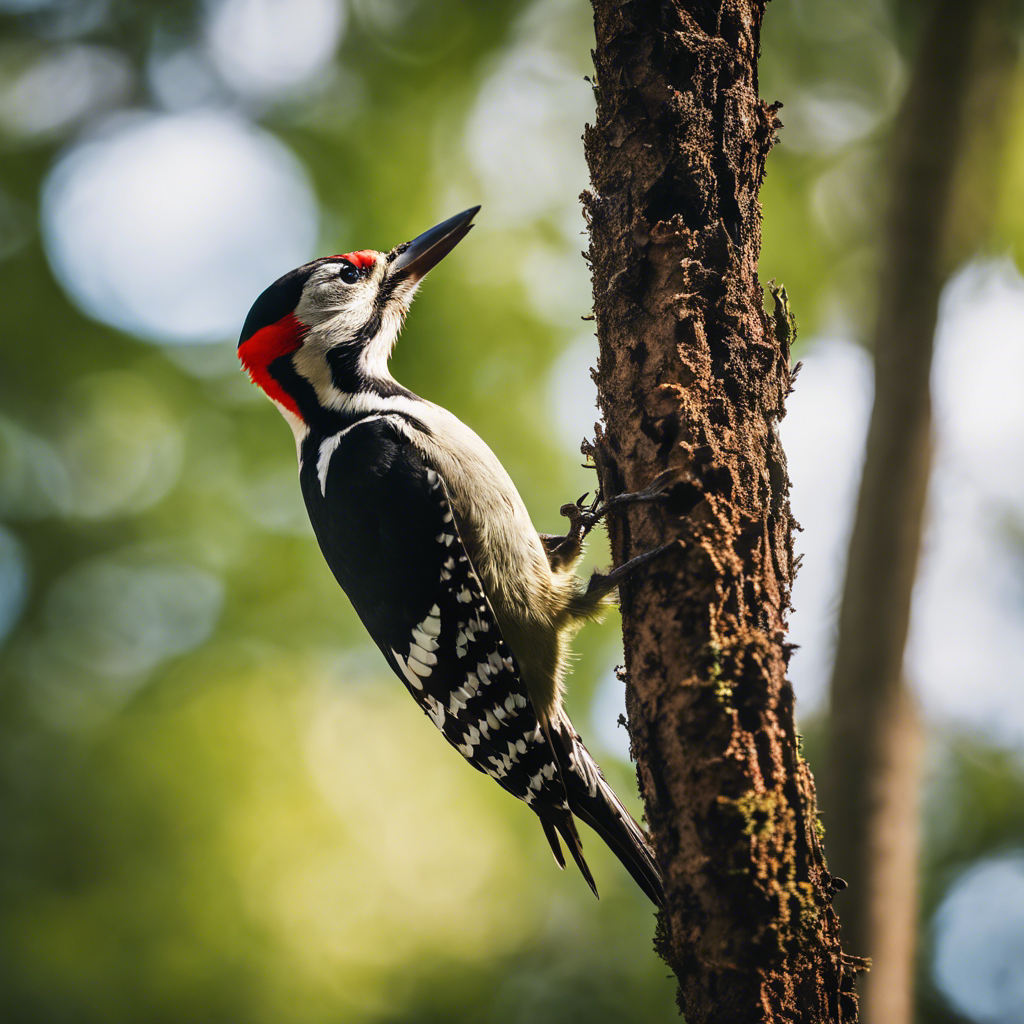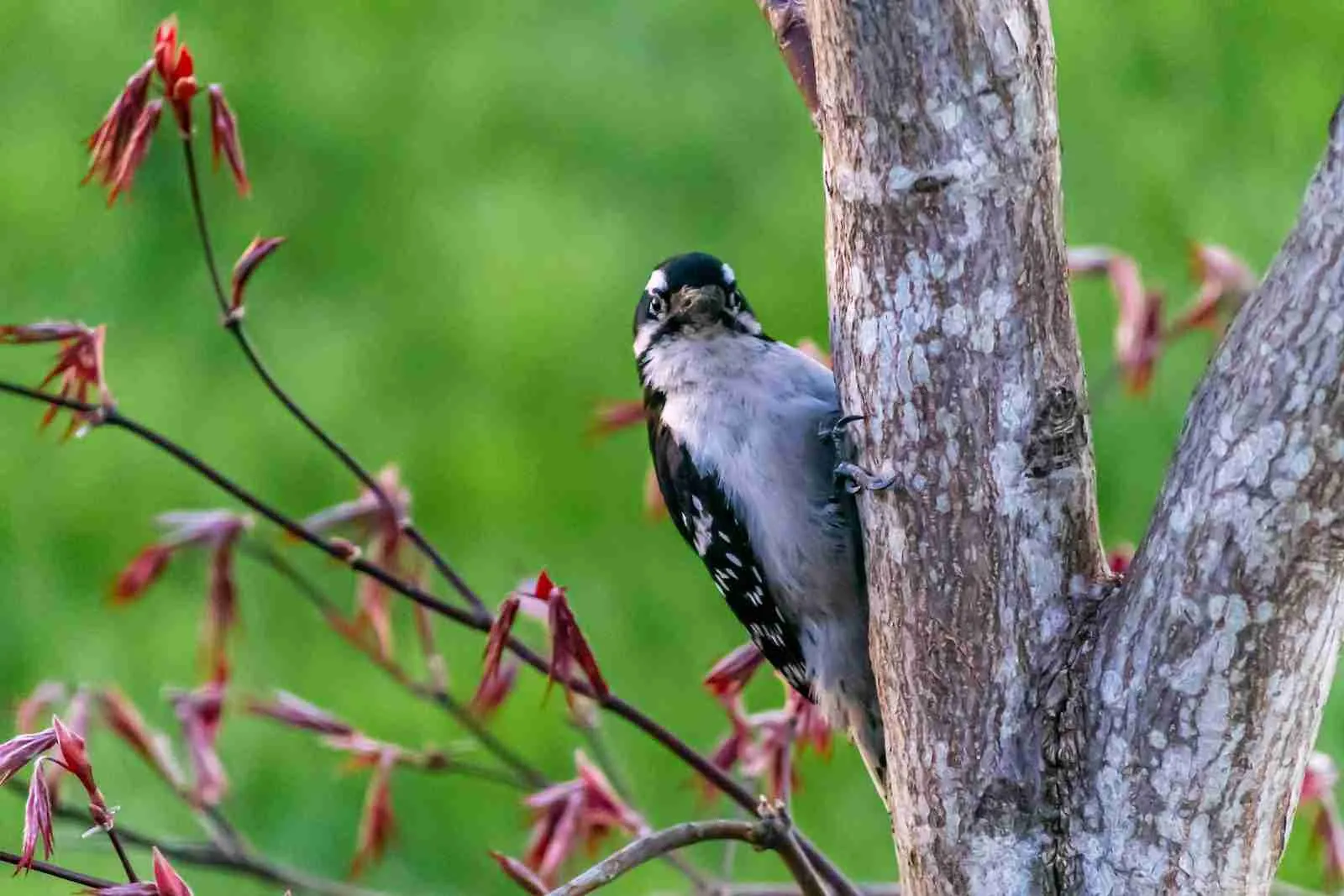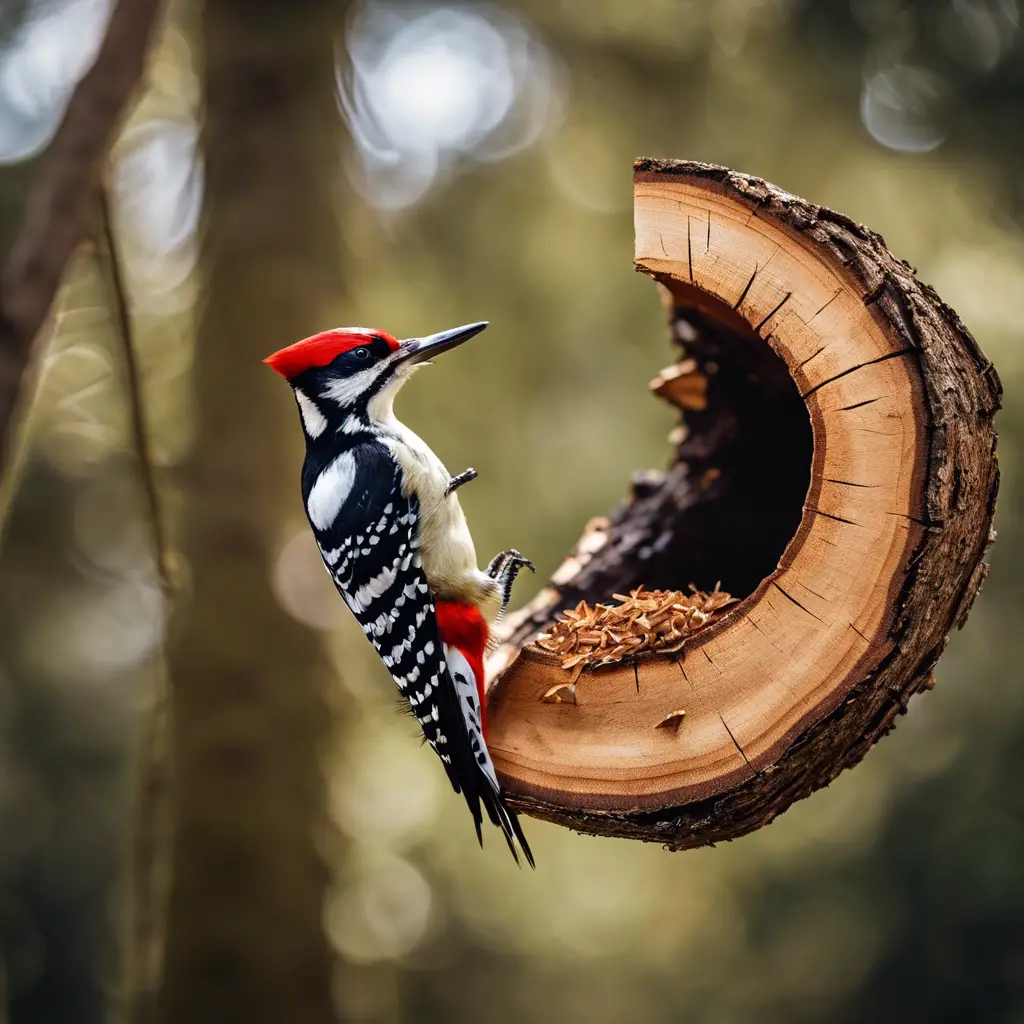As an ornithologist with years of fieldwork, my experience with woodpeckers has been deeply enlightening.
I recall one particular morning, the rhythmic pecking on my cabin’s siding roused me. Understanding their sensitivity to certain sounds, I played recordings of predator calls. To my fascination, the drumming ceased, and the bird retreated. This event cemented my belief in the power of bioacoustic deterrents.
Through such encounters, I’ve honed my expertise in avian behavior, particularly in non-invasive species management. This knowledge is invaluable for homeowners seeking humane solutions to coexist with these vibrant yet often misunderstood creatures.
Key Takeaways
- Natural predator calls can effectively deter woodpeckers by mimicking distress calls or predatory sounds.
- Electronic noise devices, such as battery-powered or solar-powered devices, are a low-maintenance and humane option to scare away woodpeckers.
- Household deterrent sounds like banging pots and pans or shouting human voices, combined with visual scares, can create an unpredictable environment that woodpeckers tend to avoid.
- Commercial repellent options, such as ultrasonic devices, reflective tape, acoustic deterrents, bird netting, or chemical sprays, can be used as part of an integrated approach to minimize woodpecker damage.
Natural Predator Calls

Utilizing natural predator calls can effectively deter woodpeckers from invading your property by exploiting their innate fear of predators. These auditory signals mimic the distress calls of birds or the menacing sounds of predatory species, creating an environment perceived as unsafe by woodpeckers.
Implementing this bird deterrent technique is straightforward and cost-efficient. For optimal results, strategically position speakers at the height where woodpecker damage is prevalent. Adjusting the volume and location of these devices may further enhance their efficacy.
Moreover, combining natural predator calls with visual deterrents, such as owl decoys, can reinforce the perceived threat, thereby amplifying the chance to scare woodpeckers away and prevent them from returning to your property.
Electronic Noise Devices

device when woodpeckers are detected
- Can be powered by batteries or solar energy
- Weatherproof and durable for outdoor use
- Low maintenance, with adjustable volume settings
- Safe and humane, without causing harm to woodpeckers
Household Deterrent Sounds
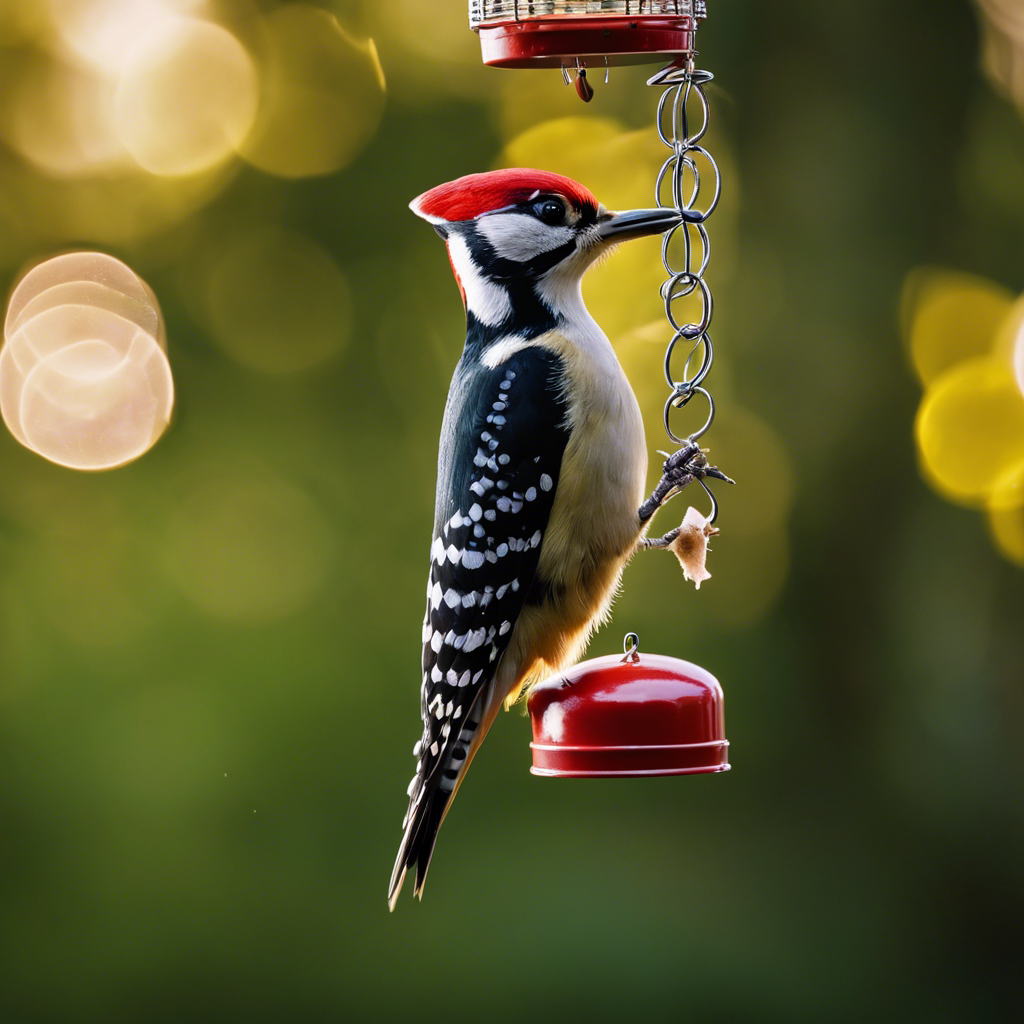
When combating woodpecker disturbances, homeowners can employ a variety of household deterrent sounds, such as the sharp clatter of banging pots and pans or the urgent shouts of human voices, to effectively scare these persistent birds away from their property. These auditory signals serve as a bird scare, prompting an immediate aversive response.
Additionally, integrating visual elements like hanging shiny objects—aluminum foil, pinwheels, or mylar strips—near areas of concern can enhance the deterrent effect. The reflection and noise create an unpredictable environment that woodpeckers tend to avoid.
To take action against these avian invaders, a combination of household deterrent sounds and visual scares, such as scare tape or balloons, is recommended. Such multi-sensory strategies can provoke a taste aversion, leading to a long-term solution.
Commercial Repellent Options
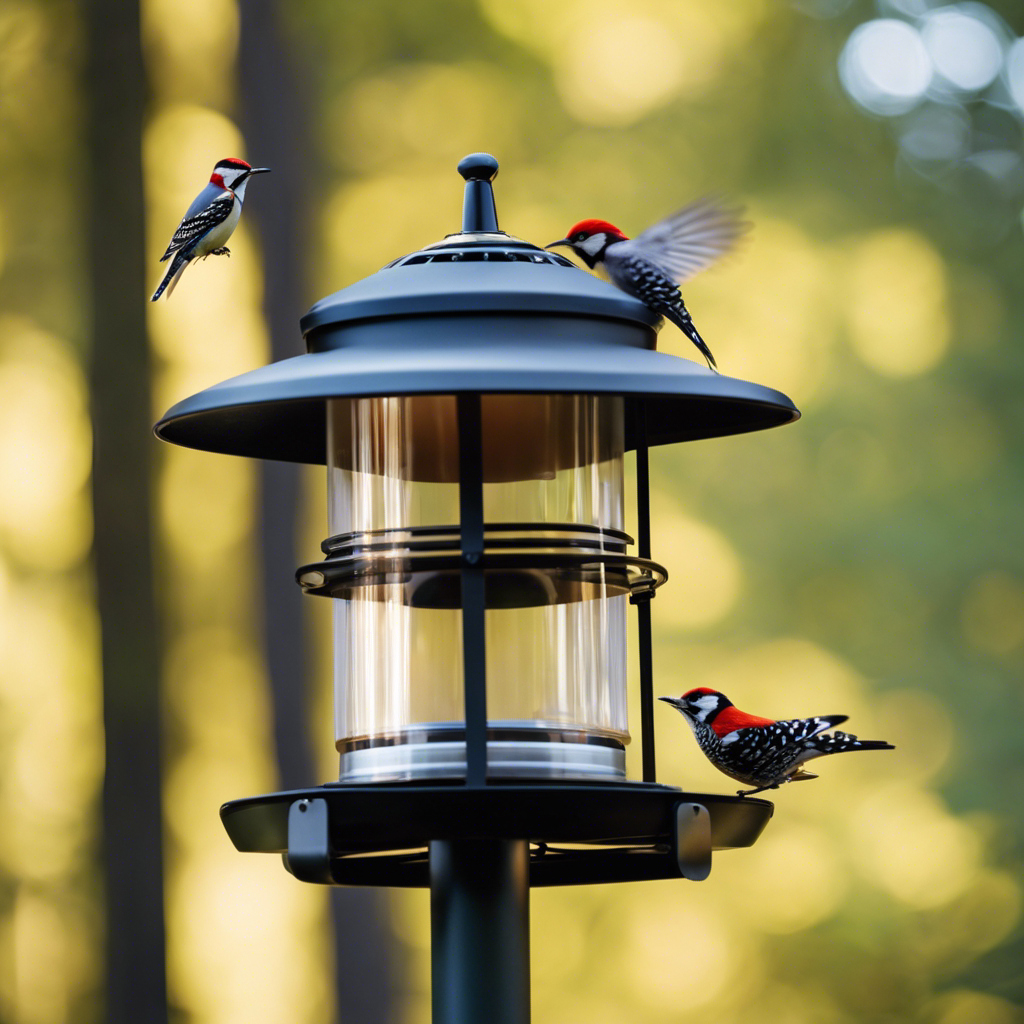
Beyond the cacophony of pots and pans, homeowners can explore a range of commercial repellent options designed to deter woodpeckers with scientifically formulated sounds and visual stimuli. These methods aim to protect structures from woodpecker damage without harming the birds.
Experts recommend using these products as part of an integrated approach to minimize cause damage to buildings:
- Ultrasonic devices: Emit sounds beyond human hearing that can disorient and repel woodpeckers.
- Reflective tape: Creates an unsettling visual effect that can scare away woodpeckers from wood siding.
- Acoustic deterrents: Mimic predator calls or distress signals to create a hostile environment for woodpeckers.
- Bird netting: Physically blocks woodpeckers from accessing potential pecking sites.
- Chemical deterrents: Non-toxic sprays that can create an unpleasant area for woodpeckers to roost or feed.
Frequently Asked Questions
What Sounds Repel Woodpeckers?
You’ll effectively repel woodpeckers with wind chimes, loud banging, or recordings of predator calls. Reflective objects can also amplify the effect, creating a multisensory deterrent that’s hard for these birds to ignore.
How Do You Scare Away Woodpeckers?
You can scare away woodpeckers by installing motion-activated lights, hanging reflective objects, and applying taste deterrents. Persistent loud noises, like banging pots, may also work. Ensure you’re not harming the birds in the process.
What Is the Most Effective Woodpecker Deterrent?
The most effective woodpecker deterrent combines visual scares, such as reflective tape, with acoustic devices and habitat modification to discourage pecking and nesting on your property.
What Sound Are Birds Afraid Of?
You’ll find birds are often frightened by sudden, loud noises, including predator calls and distress signals, which can be replicated by electronic sound repellers for effective deterrence.
Conclusion
In conclusion, while no universal noise guarantees to scare woodpeckers, employing a combination of natural predator calls, electronic noise devices, household deterrent sounds, and commercial repellents may effectively dissuade them.
It’s essential to observe their reactions and adjust your strategy accordingly. Remember, woodpeckers are protected species; thus, always opt for humane, non-lethal methods.
Stay informed about their behavior to implement the most effective deterrents while respecting wildlife regulations.

An avid ornithologist, zoologist and biologist with an unwavering passion for birds and wild animals.
Dr. Wilson’s journey in ornithology began in childhood and led him to obtain a Ph.D. in Ornithology from the prestigious Avian Research Institute. He has worked closely with renowned experts in the field and conducted extensive research and field studies globally.

